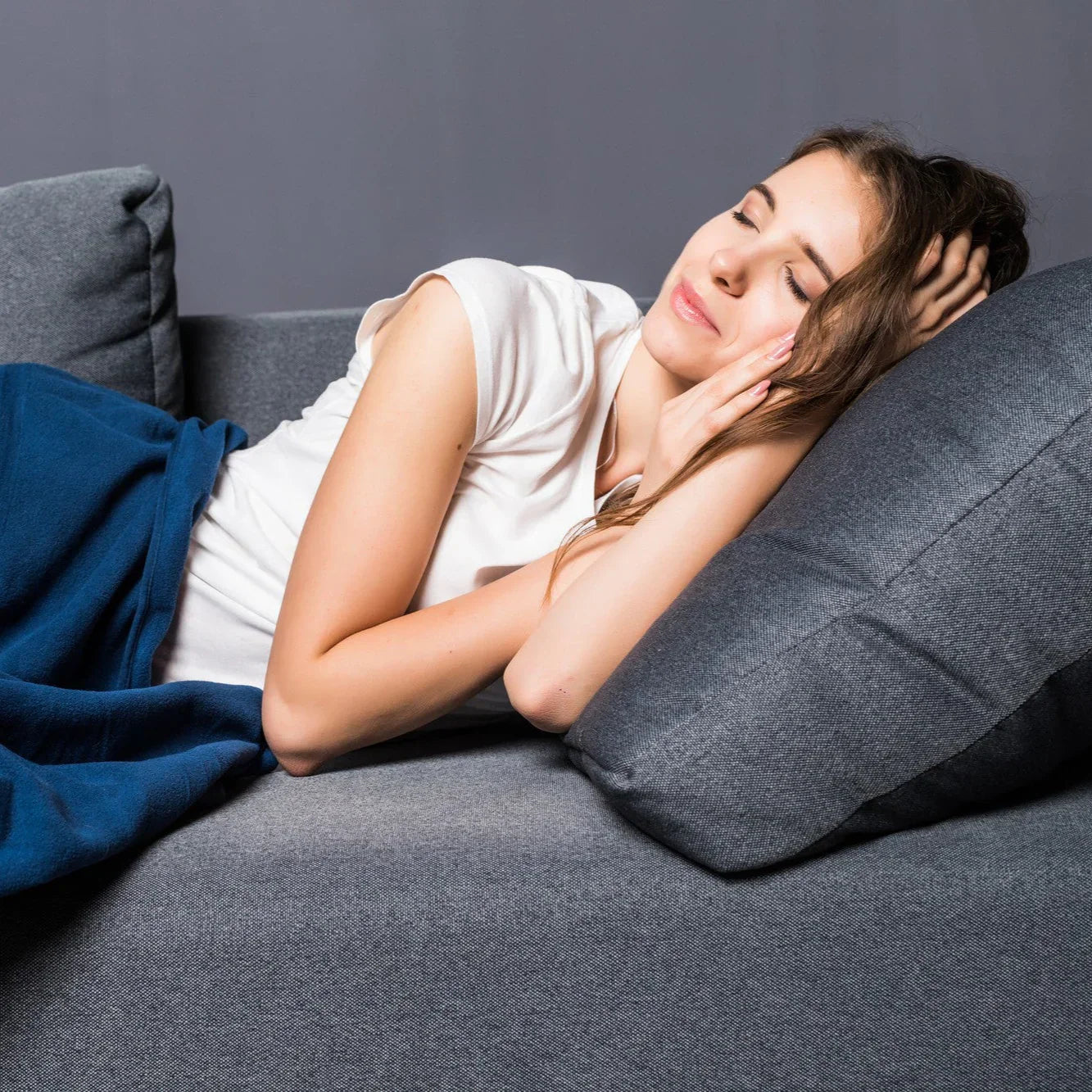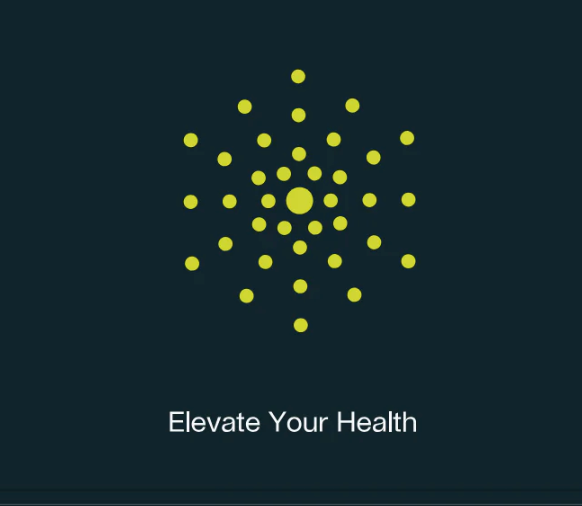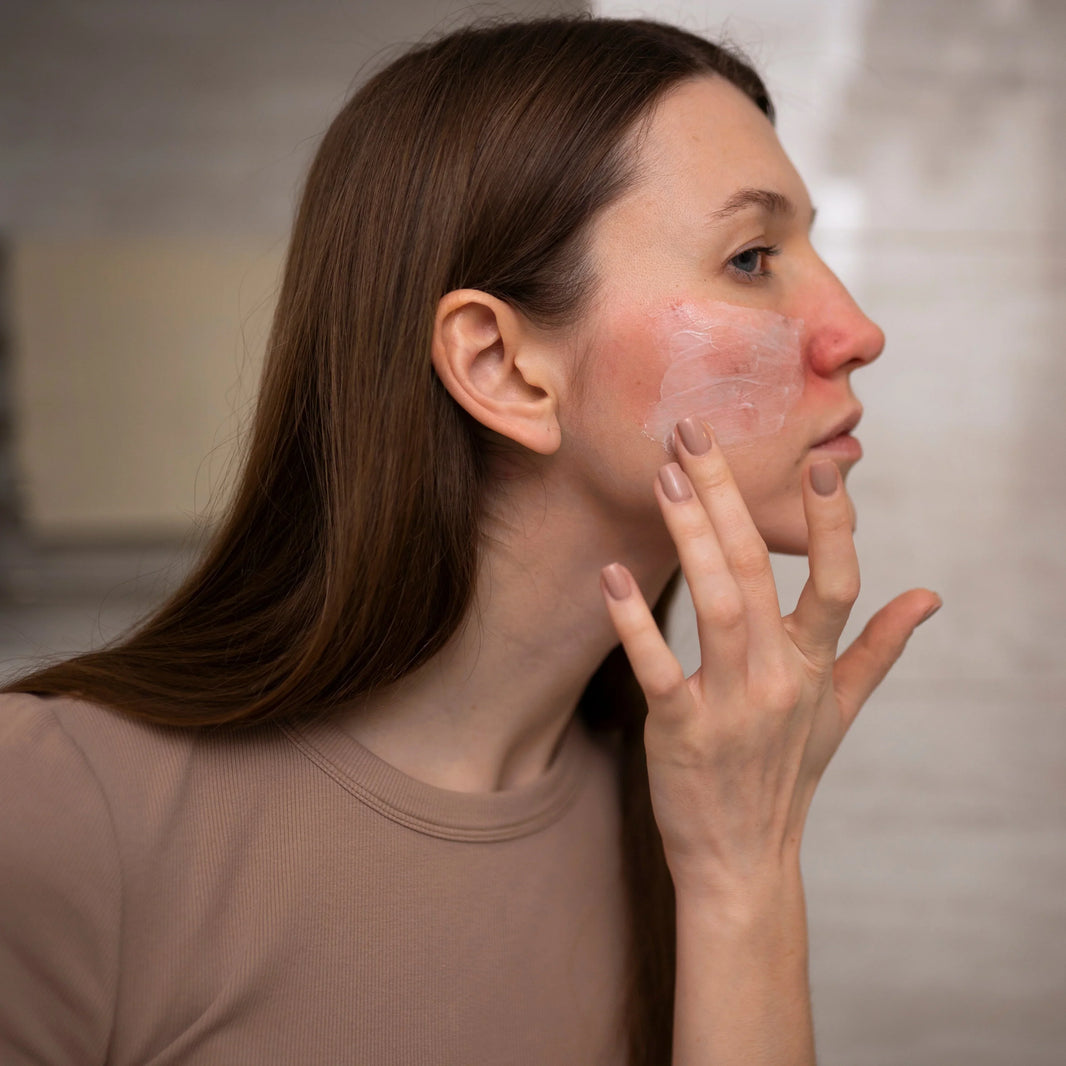Sleep support encompasses various interventions, supplements, and practices designed to enhance sleep quality, address sleep disorders, and promote optimal sleep-wake cycles. The importance of good quality sleep cannot be overstated, as it plays a crucial role in physical health, cognitive function, emotional well-being, and overall quality of life. Sleep disturbances affect approximately 56% of the general population, with increasing prevalence in specific demographics such as peri- and post-menopausal women16. This comprehensive report examines the physiological mechanisms underlying sleep regulation, explores evidence-based interventions for sleep support, and distinguishes between well-established and emerging approaches to improving sleep quality.
Physiological Mechanisms of Sleep Regulation
Circadian Rhythm and Light Exposure
The sleep-wake cycle is primarily regulated by circadian rhythms, which are internal biological processes that follow a roughly 24-hour cycle. Ocular light exposure significantly influences human health and well-being through modulation of circadian rhythms and sleep, as well as neuroendocrine and cognitive functions1. Light information is processed through intrinsically photosensitive, melanopsin-expressing retinal neurons that mediate these effects on the suprachiasmatic nucleus, the body's central pacemaker1. These specialized photoreceptors are particularly sensitive to blue light wavelengths and play a critical role in synchronizing internal biological clocks with environmental light-dark cycles. Recent advancements in lighting science have led to the development of international standards for quantifying the influence of light on these photosensitive neurons, using metrics such as melanopic equivalent daylight illuminance (melaponic EDI)1. This standardized approach provides a framework for optimizing lighting environments to support healthy sleep patterns.
The timing, intensity, and spectral composition of light exposure throughout the day significantly impact sleep quality and circadian alignment. Exposure to bright light during daytime hours helps maintain proper circadian entrainment, while limiting blue light exposure in the evening promotes melatonin production and facilitates the natural transition to sleep1. Improper light exposure patterns can disrupt these natural processes, leading to circadian misalignment and compromised sleep quality. Research supports that adjusting lighting conditions to more closely mimic natural patterns may promote optimal physical and mental health by properly engaging the circadian system's regulatory mechanisms1.
Neurotransmitters and Neurohormonal Pathways
Sleep regulation involves complex interactions between various neurotransmitters and neurohormones, with several key players identified in current research. The GABA (gamma-aminobutyric acid) system plays a central role in promoting sleep by inhibiting neuronal excitability and reducing arousal37. GABA activity is essential for initiating and maintaining sleep, particularly non-rapid eye movement (NREM) sleep, which constitutes the deeper, more restorative sleep stages. Many sleep-supporting supplements and medications target the GABAergic system to promote relaxation and improve sleep onset and maintenance3. The effectiveness of certain herbal supplements like ashwagandha in improving sleep quality has been linked to their effects on GABA-ergic transmission, highlighting the importance of this pathway in sleep regulation3.
Melatonin represents another critical component of sleep regulation, acting as the body's primary sleep hormone. Produced by the pineal gland in response to darkness, melatonin signals to the body that it is time to sleep and helps establish proper sleep-wake timing5812. Melatonin exerts its effects through high-affinity G-protein coupled receptors known as MT1 and MT2, which have distinct but complementary roles in sleep regulation12. Contrary to traditional views that melatonin only influences the circadian aspects of sleep, growing evidence suggests it may also modulate sleep homeostasis and architecture12. Research indicates that MT1 receptors primarily regulate REM sleep while MT2 receptors regulate NREM sleep, demonstrating the complexity of melatonin's role in sleep physiology12. This intricate system of receptor-mediated actions explains why melatonin supplementation can be effective for certain sleep disturbances but may not address all aspects of sleep dysfunction.
Neural Activity Recalibration and Memory Consolidation
Recent research has revealed important connections between sleep states and neural processing that support cognitive functions, particularly memory consolidation. During sleep, especially REM sleep, neural activity undergoes recalibration processes that are essential for optimal cognitive functioning6. Studies combining electrophysiology with in vivo imaging techniques have demonstrated that non-oscillatory brain activity during REM sleep mediates a sleep-dependent recalibration of neural population dynamics6. This recalibration process appears to be crucial for memory consolidation, with the extent of REM sleep recalibration predicting the success of overnight memory retention6. These findings highlight the importance of obtaining adequate REM sleep for cognitive health and provide a neurophysiological explanation for the well-documented relationship between sleep quality and cognitive performance.
The memory benefits of sleep involve modulation of hippocampal-neocortical activity that favors remembering rather than forgetting6. This process reflects a non-oscillatory mechanism through which REM sleep optimizes neural population activity to enhance long-term memory formation and retention. Understanding these neurobiological mechanisms underscores the importance of supporting healthy sleep architecture, including appropriate amounts of REM sleep, rather than simply focusing on total sleep duration. Interventions that enhance REM sleep quality may therefore have particular benefits for cognitive function and memory processes6.
Evidence-Based Sleep Support Interventions
Melatonin Supplementation
Melatonin is one of the most widely researched and commonly used supplements for sleep support. Commonly referred to as the "hormone of sleep," melatonin plays a pivotal role in regulating the sleep-wake cycle through its actions on MT1 and MT2 receptors12. Numerous studies have demonstrated melatonin's efficacy in addressing certain sleep disorders, particularly those involving circadian rhythm disruptions such as delayed sleep phase syndrome and jet lag129. Melatonin supplementation may help reduce sleep onset latency, making it useful for individuals who have difficulty falling asleep. The effectiveness of melatonin appears to be most pronounced in individuals with low endogenous melatonin levels or disrupted circadian rhythms, explaining its variable effects across different populations12.
Despite its widespread use and substantial research base, clinical trials on melatonin have yielded somewhat conflicting results regarding its overall efficacy for improving sleep quality9. These inconsistencies may be attributed to variations in dosing protocols, timing of administration, supplement formulations, and individual differences in melatonin metabolism1214. Current evidence suggests that lower doses (0.5-3 mg) may be more effective than higher doses, and timing is crucial, with administration approximately 2 hours before desired sleep time providing optimal results12. While melatonin is generally considered safe for short-term use, research on long-term safety and efficacy remains limited, and optimal dosing guidelines for different age groups and specific sleep disorders have not been fully established149.
Herbal Supplements: Ashwagandha and Others
Ashwagandha (Withania somnifera) has emerged as a promising natural sleep aid with substantial scientific support. Native to the Indian subcontinent, this adaptogenic herb has demonstrated positive effects on both sleep quality and duration in clinical studies3. Research indicates that ashwagandha improves sleep parameters among both insomniacs and healthy individuals, making it a versatile sleep support option3. The sleep-inducing properties of ashwagandha have been linked to its specific chemical constituent, triethylene glycol, which appears to be the primary compound responsible for its sleep-promoting effects3. Additionally, ashwagandha has been shown to increase dopamine levels in the brain with regular use, suggesting potential benefits for sleep-related disorders such as restless legs syndrome3.
The mechanisms through which ashwagandha supports sleep include enhancement of GABA-ergic transmission and reduction of oxidative stress under conditions of sleep deprivation3. These multifaceted effects distinguish ashwagandha from single-mechanism sleep aids and may explain its broad efficacy across different types of sleep disturbances. Clinical studies have demonstrated improvements in various sleep parameters including sleep onset latency, sleep efficiency, and total sleep time with regular ashwagandha supplementation3. While more large-scale clinical trials are needed to establish optimal dosing guidelines and confirm long-term safety, current evidence supports ashwagandha as a promising natural intervention for enhancing sleep quality3.
Mineral Supplementation: Magnesium
Magnesium has gained popularity as a sleep-supporting supplement, particularly in social media and wellness communities. This essential mineral plays a role in over 300 enzymatic reactions in the body, including those involved in neurotransmitter regulation and muscle relaxation, both of which are relevant to sleep quality49. Preclinical studies support associations between magnesium status, sleep quality, and symptoms of anxiety, providing a theoretical basis for its use as a sleep aid4. Magnesium appears to influence sleep through multiple mechanisms, including regulation of the HPA axis, modulation of neurotransmitter systems, and direct effects on muscle relaxation that may reduce physical tension and promote sleep onset4.
The clinical evidence for magnesium's effects on sleep, however, presents a mixed picture. While some studies have demonstrated improvements in subjective sleep quality, sleep efficiency, and sleep time with magnesium supplementation, others have failed to show significant benefits49. A systematic review of clinical trials noted considerable heterogeneity in study designs, dosing protocols, and outcome measures, making it difficult to draw definitive conclusions about magnesium's efficacy for sleep support4. Most studies used doses ranging from 225-500 mg of elemental magnesium, with magnesium glycinate, citrate, and oxide being common forms used in research4. Despite the inconsistent clinical evidence, magnesium supplementation is generally well-tolerated and may be particularly beneficial for individuals with magnesium deficiency, which is relatively common in Western populations49.
Emerging Sleep Support Approaches with Limited Evidence
Amino Acids and Specialized Plant Extracts
Several amino acids and plant extracts have been investigated for their potential sleep-supporting properties, though evidence for many of these remains preliminary. L-theanine, an amino acid found naturally in tea leaves, has gained attention for its potential relaxation effects without sedation79. Preliminary research suggests L-theanine may help reduce sleep latency and improve sleep quality through mechanisms that may involve GABA and serotonin modulation79. Similarly, L-serine, a non-essential amino acid, has been studied for its potential effects on sleep, though clinical evidence remains limited7. These amino acids represent an area of growing research interest, but current evidence is insufficient to make strong recommendations regarding their efficacy for sleep support9.
Specialized plant extracts, including Apocynum venetum leaf extract (AVLE), have also been investigated for sleep-supportive properties7. AVLE contains bioactive compounds that may influence neurotransmitter systems involved in sleep regulation, though the specific mechanisms and clinical efficacy require further clarification7. Preliminary investigations have suggested potential benefits for certain sleep parameters, but these findings must be validated through larger, well-designed clinical trials before definitive conclusions can be drawn7. The current evidence base for these specialized extracts is characterized by small sample sizes, methodological limitations, and inconsistent outcome measures, highlighting the need for more rigorous research to establish their efficacy and safety profiles79.
Vitamin Supplementation: Vitamin D and B Vitamins
Vitamins, particularly vitamin D and B vitamins, have been explored for their potential roles in sleep regulation, though evidence for direct sleep benefits remains limited. Vitamin D receptors are present in brain regions involved in sleep regulation, and observational studies have identified associations between vitamin D status and sleep quality9. However, intervention studies examining the effects of vitamin D supplementation on sleep outcomes have yielded inconsistent results, with some showing modest improvements in specific sleep parameters and others finding no significant effects9. The relationship between vitamin D and sleep may be bidirectional, with poor sleep potentially affecting vitamin D metabolism and low vitamin D potentially contributing to sleep disturbances, but causal relationships have not been clearly established9.
B vitamins, particularly vitamin B6 (pyridoxine), are frequently included in sleep support formulations due to their roles in neurotransmitter synthesis and regulation14. Vitamin B6 is involved in the production of serotonin and melatonin, suggesting a theoretical basis for sleep benefits14. However, clinical evidence specifically supporting vitamin B6 supplementation for sleep improvement is sparse, with few controlled trials demonstrating significant benefits149. Many commercial sleep support products contain vitamin B6 alongside other ingredients, making it difficult to isolate its specific contributions to any observed sleep improvements14. Current evidence does not strongly support the use of vitamin B supplements as standalone interventions for sleep disturbances but suggests they may play a supportive role in overall sleep health, particularly in individuals with suboptimal B vitamin status914.
Environmental and Behavioral Factors in Sleep Support
Light Management and Circadian Optimization
Optimizing light exposure represents one of the most evidence-based approaches to supporting healthy sleep. A newly developed international standard provides a scientifically validated framework for quantifying light's influence on the intrinsically photosensitive retinal neurons that regulate circadian rhythms1. Based on expert scientific consensus, recommendations for lighting aim to promote optimal physical and mental health by properly engaging the circadian system's regulatory mechanisms1. These recommendations provide guidance on the timing, intensity, and spectral composition of light exposure to support proper alignment of the body's internal biological clock with the environmental light-dark cycle1. Proper light management includes exposure to bright, blue-enriched light during daytime hours to promote alertness and circadian entrainment, followed by a reduction in light intensity and blue light wavelengths in the evening to facilitate melatonin production and prepare the body for sleep1.
The implementation of these evidence-based lighting recommendations represents a non-pharmacological approach to sleep support that addresses one of the fundamental regulatory mechanisms of the sleep-wake cycle1. Advanced lighting technologies now make it possible to adjust lighting conditions throughout the day to more closely mimic natural patterns and better support circadian physiology1. These approaches may be particularly beneficial for individuals with circadian rhythm sleep disorders, shift workers, and those living in environments with limited access to natural daylight cycles1. Strategic light management offers a complementary approach to other sleep support interventions and may enhance the efficacy of pharmacological and supplemental approaches by optimizing the underlying circadian regulatory systems1.
Lifestyle Factors: Diet and Social Connections
Emerging research suggests that broader lifestyle factors, including dietary patterns and social relationships, may significantly impact sleep quality. There is increasing evidence supporting a reciprocal relationship between sleep and fruit and vegetable consumption, with studies showing that adults sleeping the recommended 7-9 hours per day have the highest intakes of fruits and vegetables17. The relationship appears to be bidirectional, with disrupted sleep influencing fruit and vegetable consumption through both homeostatic and non-homeostatic mechanisms, and fruit and vegetable consumption potentially influencing sleep through their polyphenol content via several pathways17. While experimental studies examining these relationships are currently limited and show inconsistent results, the potential connection between dietary patterns and sleep quality represents an intriguing area for future research and potential intervention development17.
Social factors, particularly romantic relationships and perceived social support, also appear to play important roles in sleep quality. Romantic relationship experiences have been linked to sleep quality through multiple mechanisms, including emotional and affective responses, self-perceptions, social perceptions, self-regulation, and biological functioning11. Strong evidence supports the mediating effects of emotional and affective mechanisms in explaining associations between various aspects of romantic relationships and sleep quality11. Similarly, perceived social support demonstrates a temporal relationship with sleep quality, with good sleep quality being significantly associated with higher levels of perceived social support18. Depressed mood appears to mediate the effect of sleep quality on perceived social support, highlighting the complex interrelationships between sleep, mood, and social functioning18. These findings suggest that interventions targeting social connections and emotional well-being may indirectly support sleep quality, offering complementary approaches to more direct sleep interventions1118.
Conclusion: The Future of Sleep Support
The field of sleep support is rapidly evolving, with advances in our understanding of the physiological mechanisms underlying sleep regulation informing the development of more targeted and effective interventions. Current evidence supports several approaches to sleep support, including melatonin supplementation, certain herbal compounds like ashwagandha, strategic light management, and attention to broader lifestyle factors such as diet and social connections131217. However, many commonly used supplements and interventions, including vitamins, amino acids, and specialized plant extracts, have limited or conflicting evidence regarding their efficacy for improving sleep quality47914. This highlights the need for more rigorous, well-designed clinical trials to better establish the effectiveness, optimal dosing, and safety profiles of these interventions.
Future directions in sleep support research should focus on several key areas. Personalized approaches to sleep support, considering individual differences in circadian physiology, genetic factors, and comorbid conditions, may yield more consistent and meaningful improvements in sleep quality51013. More research is needed to understand the interactions between different sleep support interventions and to develop combination approaches that target multiple aspects of sleep physiology simultaneously712. Additionally, greater attention should be paid to the long-term efficacy and safety of sleep support interventions, as most current research focuses on short-term outcomes4912. As our understanding of sleep physiology continues to advance, the development of more targeted, evidence-based approaches to sleep support holds promise for addressing the significant burden of sleep disruption on individual health and societal well-being1612.
Citations:
- https://www.ncbi.nlm.nih.gov/pmc/articles/PMC8929548/
- https://www.semanticscholar.org/paper/fb9e9badf31a2a05bc888282ef1c21443d3f0d82
- https://www.semanticscholar.org/paper/1823cced8885048cc09aa590fca3d68fd36104ae
- https://www.ncbi.nlm.nih.gov/pmc/articles/PMC11136869/
- https://www.ncbi.nlm.nih.gov/pmc/articles/PMC9821171/
- https://www.ncbi.nlm.nih.gov/pmc/articles/PMC10456851/
- https://www.ncbi.nlm.nih.gov/pmc/articles/PMC10220724/
- https://www.semanticscholar.org/paper/da5b90af3d7903f7d50720a20f20a28e36ea92af
- https://pubmed.ncbi.nlm.nih.gov/38737872/
- https://www.ncbi.nlm.nih.gov/pmc/articles/PMC9530454/
- https://www.ncbi.nlm.nih.gov/pmc/articles/PMC11303874/
- https://pubmed.ncbi.nlm.nih.gov/39400423/
- https://www.ncbi.nlm.nih.gov/pmc/articles/PMC7073991/
- https://www.semanticscholar.org/paper/0a923bc5727e6d05ae7a1e755c05e23fa2c4fd15
- https://www.semanticscholar.org/paper/6a1a767485aa57be360542c76d2d939b435a5dc8
- https://www.semanticscholar.org/paper/13a2eaedd87d0e84ef9a9f937065830b9ccf167c
- https://www.ncbi.nlm.nih.gov/pmc/articles/PMC6627504/
- https://www.semanticscholar.org/paper/1e071d091c3f45b6fed2fa31f2ac80047ad59f2c
- https://www.ncbi.nlm.nih.gov/pmc/articles/PMC10439559/
- https://pubmed.ncbi.nlm.nih.gov/37183177/
- https://www.ncbi.nlm.nih.gov/pmc/articles/PMC9488957/
- https://www.ncbi.nlm.nih.gov/pmc/articles/PMC11321850/
- https://pubmed.ncbi.nlm.nih.gov/38382911/
- https://pubmed.ncbi.nlm.nih.gov/37636897/
- https://www.ncbi.nlm.nih.gov/pmc/articles/PMC8762353/
- https://www.ncbi.nlm.nih.gov/pmc/articles/PMC11554931/
- https://pubmed.ncbi.nlm.nih.gov/36274826/
- https://www.semanticscholar.org/paper/875c201827821fbd3366db3c257af5d6bde09d19
- https://www.semanticscholar.org/paper/ba4a2dfa469be39e4e630986bb955483285f409f
- https://www.semanticscholar.org/paper/a72fbb116f1394f369012845f5bb7e803d0e1339
- https://www.ncbi.nlm.nih.gov/pmc/articles/PMC10948475/
- https://www.ncbi.nlm.nih.gov/pmc/articles/PMC11744243/
- https://www.ncbi.nlm.nih.gov/pmc/articles/PMC10857497/
- https://www.semanticscholar.org/paper/14fc3797400526c0d20a9123ed1ea975631b83ce
- https://pubmed.ncbi.nlm.nih.gov/38414320/
- https://www.semanticscholar.org/paper/badf5b7e57898938af63b67dcdaa8885efd851f9
- https://pubmed.ncbi.nlm.nih.gov/37665064/
- https://pubmed.ncbi.nlm.nih.gov/28643446/
- https://pubmed.ncbi.nlm.nih.gov/38469084/
- https://pubmed.ncbi.nlm.nih.gov/33245776/
- https://pubmed.ncbi.nlm.nih.gov/36515157/
- https://www.ncbi.nlm.nih.gov/pmc/articles/PMC10465394/
- https://pubmed.ncbi.nlm.nih.gov/35366021/
- https://www.ncbi.nlm.nih.gov/pmc/articles/PMC9272273/
- https://pubmed.ncbi.nlm.nih.gov/32638342/
- https://www.ncbi.nlm.nih.gov/pmc/articles/PMC10941623/
- https://www.ncbi.nlm.nih.gov/pmc/articles/PMC10314484/
- https://pubmed.ncbi.nlm.nih.gov/38346867/
- https://www.ncbi.nlm.nih.gov/pmc/articles/PMC11200646/








